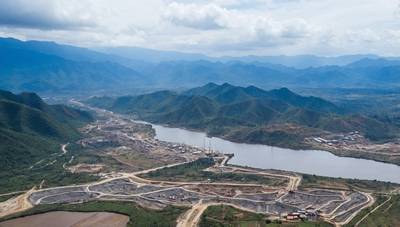
Lagos — Schneider Electric’s Field Service Cycle, otherwise known as the Five-Pillar Strategy, is a structured approach to managing the lifecycle of equipment to prolong asset lifespan while reducing the total cost of ownership for customers. This framework ensures reliability, efficiency and cost-effectiveness in equipment maintenance and optimisation.
The cycle spans from initial planning to renewal, ensuring a structured approach to customer engagement. Each pillar has a distinct definition that shapes how we communicate solutions to customers. Essentially, it serves as a guideline for navigating service interactions.
When equipment issues arise, simply applying surface-level fixes or making assumptions can prolong the problem. Without a thorough assessment, the root cause remains undetected, and by the time it is addressed, the asset may be beyond repair.
Avoiding guesswork
Proper diagnostics allow for informed decisions that either extend equipment life or, if necessary, signal when replacement is the only viable solution. The key is avoiding guesswork and addressing issues before they become critical.
Each of the five pillars is designed to address specific customer needs:
Plan: Identifying the Right Options
At this stage, we define and design the most suitable solution by starting with consulting services. Through thorough diagnostics, rather than assumptions, we identify the root cause of the issue and recommend the best approach. Consulting falls under the planning phase, ensuring that every decision is based on reliable insights rather than guesswork.
Install: Commissioning the Solution
This stage emphasises installation and commissioning services, ensuring seamless implementation of equipment. Schneider Electric’s trained field service representatives specialise in handling all products and solutions. Additionally, our network of certified partners across Anglophone Africa extends support, enabling efficient deployment in various regions.
Operate: Optimising Performance and Maintenance
This phase maximises uptime and performance while controlling capital expenditures. Our goal is to extend the lifespan of equipment, minimising the need for premature replacements. Where direct preservation is not feasible, we implement predictive maintenance plans, helping customers anticipate failures before they occur.
Optimise: Enhancing Efficiency and Reliability
This phase involves reducing risk and enhancing equipment reliability through tailored Service Level Agreements (SLAs). Optimisation is an ongoing process, often requiring phased interventions to adapt to evolving operational needs. Continuous collaboration ensures that the most effective solutions are applied while keeping customer sites operational and efficient.
Renew: Sustaining Performance Through Contracts
The final pillar revolves around defining and implementing solutions that improve performance, flexibility, and cost control for ageing infrastructure. When customers inquire about SLAs, we engage in detailed discussions to tailor contracts precisely to their needs. Whether they require agreements for spare parts, periodic servicing or full equipment lifecycle coverage, the renewal phase ensures a sustainable partnership aligned with long-term operational goals.
Using this approach, we can define and design tailored solutions that align with customer needs. The process often begins with consulting, allowing us to diagnose the root cause of the challenge rather than making assumptions. Consulting falls within the planning phase because it enables a structured approach – we assess the situation, identify the underlying issue and provide recommendations accordingly. This ensures that we deliver the most effective solution to the customer.
Purpose-driven recommendations
Each site presents unique challenges, and a one-size-fits-all solution simply does not work. By identifying the specific pain points and aligning solutions with the customer’s operational objectives, we ensure that every recommendation is purpose-driven rather than based on assumptions.
Ultimately, the Five-Pillar Strategy is a collaborative process, and we engage in thorough discussions to define the core issues, establish goals and then walk through the solutions step by step. This not only helps in prolonging equipment lifespan but also ensures optimal performance and cost efficiency.
*Nontu Mkhize, Offer Marketing Manager: Power Services and Industry – Anglophone Africa at Schneider Electric



